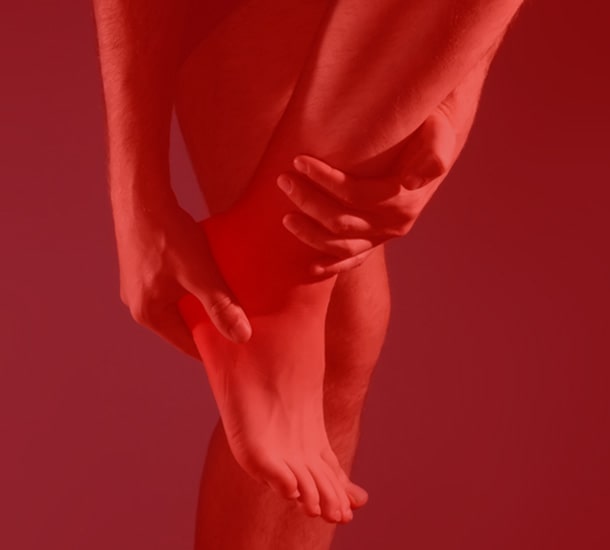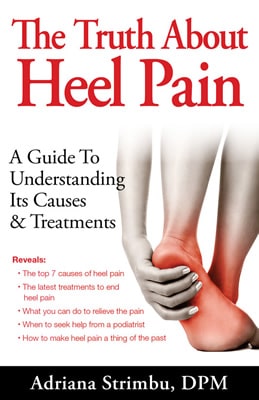Connect With Us
Blog

Hammertoe is a deformity where the toe becomes bent at the middle joint, causing pain, corns, and difficulty wearing shoes. It often results from muscle imbalance, wearing ill-fitting footwear, trauma, or genetic factors. Risk of developing a hammertoe increases with age, arthritis, and certain foot shapes. When conservative treatments no longer relieve discomfort, surgery may be necessary to realign the toe and restore function. Recovery time varies but often includes rest, limited activity, and wearing special footwear until healing is complete. A podiatrist evaluates the severity of the deformity, guides the surgical plan, and supports rehabilitation for optimal results. If you experience persistent pain or difficulty walking due to hammertoe, it is suggested that you consult a podiatrist to discuss your treatment options.
Foot surgery is sometimes necessary to treat a foot ailment. To learn more, contact Adriana Strimbu, DPM of Complete Foot & Ankle Care. Our doctor will assist you with all of your foot and ankle needs.
When Is Surgery Necessary?
Foot and ankle surgery is generally reserved for cases in which less invasive, conservative procedures have failed to alleviate the problem. Some of the cases in which surgery may be necessary include:
- Removing foot deformities like bunions and bone spurs
- Severe arthritis that has caused bone issues
- Cosmetic reconstruction
What Types of Surgery Are There?
The type of surgery you receive will depend on the nature of the problem you have. Some of the possible surgeries include:
- Bunionectomy for painful bunions
- Surgical fusion for realignment of bones
- Neuropathy decompression surgery to treat nerve damage
Benefits of Surgery
Although surgery is usually a last resort, it can provide more complete pain relief compared to non-surgical methods and may allow you to finally resume full activity.
Surgical techniques have also become increasingly sophisticated. Techniques like endoscopic surgery allow for smaller incisions and faster recovery times.
If you have any questions please feel free to contact our office located in Hallandale Beach, FL . We offer the newest diagnostic and treatment technologies for all your foot and ankle needs.

Plantar fasciitis occurs when the thick band of tissue along the bottom of the foot becomes inflamed, often causing sharp heel pain, especially with the first steps in the morning. It can be caused by overuse, poor footwear, excessive standing, or foot structure issues. Symptoms include heel pain, tightness, and tenderness along the arch. Helpful exercises include toe lifts to strengthen the foot, towel stretches to improve flexibility, and heel raises to support the arch. A podiatrist can diagnose the condition, recommend custom orthotics, and guide treatment to reduce pain and prevent recurrence. If heel pain is affecting your daily life, it is suggested that you seek professional help from a podiatrist to begin healing, enabling an accelerated return to normal activity.
Plantar fasciitis can be very painful and inconvenient. If you are experiencing heel pain or symptoms of plantar fasciitis, contact Adriana Strimbu, DPM from Complete Foot & Ankle Care. Our doctor can provide the care you need to keep you pain-free and on your feet.
What Is Plantar Fasciitis?
Plantar fasciitis is the inflammation of the thick band of tissue that runs along the bottom of your foot, known as the plantar fascia, and causes mild to severe heel pain.
What Causes Plantar Fasciitis?
- Excessive running
- Non-supportive shoes
- Overpronation
- Repeated stretching and tearing of the plantar fascia
How Can It Be Treated?
- Conservative measures – anti-inflammatories, ice packs, stretching exercises, physical therapy, orthotic devices
- Shockwave therapy – sound waves are sent to the affected area to facilitate healing and are usually used for chronic cases of plantar fasciitis
- Surgery – usually only used as a last resort when all else fails. The plantar fascia can be surgically detached from the heel
While very treatable, plantar fasciitis is definitely not something that should be ignored. Especially in severe cases, speaking to your doctor right away is highly recommended to avoid complications and severe heel pain. Your podiatrist can work with you to provide the appropriate treatment options tailored to your condition.
If you have any questions please feel free to contact our office located in Hallandale Beach, FL . We offer the newest diagnostic and treatment technologies for all your foot and ankle needs.

Sever's disease is a common cause of heel pain in adolescent children, especially those who are active in sports. It occurs when the growth plate in the heel becomes inflamed due to repetitive stress and pressure. This condition typically affects the back of the heel and may cause pain, swelling, and difficulty walking or running. Risk factors include rapid growth, participation in high-impact activities, and improper footwear. A podiatrist can diagnose the condition, recommending rest, supportive shoes, heel cushions, and specific stretches to relieve discomfort. If your child is experiencing heel pain during activity, it is suggested that you consult a podiatrist for effective treatment and guidance to ensure healthy development and a safe return to play.
Sever's disease often occurs in children and teens. If your child is experiencing foot or ankle pain, see Adriana Strimbu, DPM from Complete Foot & Ankle Care. Our doctor can treat your child’s foot and ankle needs.
Sever’s Disease
Sever’s disease is also known as calcaneal apophysitis, which is a medical condition that causes heel pain I none or both feet. The disease is known to affect children between the ages of 8 and 14.
Sever’s disease occurs when part of the child’s heel known as the growth plate (calcaneal epiphysis) is attached to the Achilles tendon. This area can suffer injury when the muscles and tendons of the growing foot do not keep pace with bone growth. Therefore, the constant pain which one experiences at the back of the heel will make the child unable to put any weight on the heel. The child is then forced to walk on their toes.
Symptoms
Acute pain – Pain associated with Sever’s disease is usually felt in the heel when the child engages in physical activity such as walking, jumping and or running.
Highly active – Children who are very active are among the most susceptible in experiencing Sever’s disease, because of the stress and tension placed on their feet.
If you have any questions, please feel free to contact our office located in Hallandale Beach, FL . We offer the newest diagnostic and treatment technologies for all your foot and ankle injuries.






